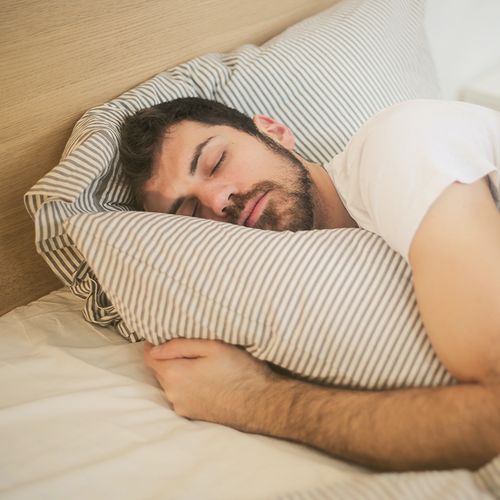Doctors have long known that obstructive sleep apnea (repeated interruptions in breathing during sleep) can harm the overall health of men and women who suffer from the condition.
What Is Sleep Apnea?
This common disorder occurs when breathing is temporarily interrupted during sleep due to narrowing of the airway. The condition affects an estimated 12 million Americans. Obesity, especially in older adults, is a leading cause of obstructive sleep apnea.
Now: New research shows that sleep apnea is even more dangerous than experts had previously realized, increasing the sufferer's risk for heart attack, stroke, diabetes and fatal car crashes.
What you need to know…
No Room To Breathe
Sleep apnea occurs about twice as often in men as in women, but it is overlooked more often in women. An estimated 70% of people with sleep apnea are overweight. Fat deposited around the neck (men with sleep apnea often wear a size 17 or larger collar, while women with the disorder often have a neck circumference of 16 inches or more) compresses the upper airway, reducing air flow and causing the passage to narrow or close. Your brain senses this inability to breathe and briefly awakens you so that you can reopen the airway.
The exact cause of obstructive sleep apnea in people of normal weight is unknown, but it may involve various anatomical characteristics, such as having a narrow throat and upper airway.
Red flag 1: About half of all people who snore loudly have sleep apnea. One telling sign is a gasping, choking kind of snore, during which the sleeper seems to stop breathing. (If you live alone and don't know whether you snore, ask your doctor about recording yourself while you are sleeping to check for snoring and other signs of sleep apnea.)
Red flag 2: Daytime sleepiness is the other most common symptom. Less common symptoms include headache, sore throat and/or dry mouth in the morning, sexual dysfunction and memory problems.
Dangers Of Sleep Apnea
New scientific evidence shows that sleep apnea increases risk for...
- Cardiovascular disease. Sleep apnea's repeated episodes of interrupted breathing-and the accompanying drop in oxygen levels-takes a toll on the heart and arteries.
New finding: Heart attack risk in sleep apnea sufferers is 30% higher than normal over a four-to five-year period, and stroke risk is twice as high in people with sleep apnea.
- Diabetes. Sleep apnea (regardless of one's weight) is linked to increased insulin resistance—a potentially dangerous condition in which the body is resistant to the effects of insulin.
New finding: A 2007 Yale study of 593 patients found that over a six-year period, people diagnosed with sleep apnea were more than two-and-a-half times more likely to develop diabetes than those without the sleep disorder.
- Accidents. Sleep apnea dramatically increases the risk for a deadly mishap due to sleepiness and impaired alertness.
New finding: A study of 1,600 people, presented in 2007 at an American Thoracic Society meeting, found that the 800 sleep apnea sufferers were twice as likely to have a car crash over a three-year period. Surprisingly, those who were unaware of being sleepy were just as likely to crash as those who were aware of being sleepy.
Do You Have Sleep Apnea?
If you think you may have sleep apnea, see a specialist at an accredited sleep center, where a thorough medical history will be taken and you may be asked to undergo a sleep study. This involves spending the night in a sleep laboratory where your breathing, oxygen level, movements and brain wave activity are measured while you sleep.
Best Treatment Options
The treatment typically prescribed first for sleep apnea is continuous positive airway pressure (CPAP). A stream of air is pumped onto the back of the throat during sleep to keep the airway open. The air is supplied through a mask, most often worn over the nose, which is connected by tubing to a small box that contains a fan.
In recent years, a larger variety of masks have become available, and fan units have become smaller and nearly silent. A number of adjustments may be needed, which may require trying several different devices and more than one visit to a sleep lab.
Other treatments for sleep apnea are usually prescribed to make CPAP more effective, or for people with milder degrees of the disorder who have tried CPAP but were unable or unwilling to use it.
These treatments include
- Mouthpieces. Generally fitted by a dentist and worn at night, these oral appliances adjust the lower jaw and tongue to help keep the airway open.
- Surgery. This may be recommended for people who have an anatomical abnormality that narrows the airway and for whom CPAP doesn't work. The most common operation for sleep apnea is uvulopalatopharyngoplasty (UPPP), in which excess tissue is removed from the back of the throat. It works about 50% of the time.
Helping Yourself
Several measures can make sleep apnea treatment more effective and, in some cases, eliminate the condition altogether. What to do…
*To find a sleep center in your area, visit the on-line directory of the American Academy of Sleep Medicine, www.sleepcenters.org.
- Lose weight, if you are overweight. For every 10% of body weight lost, the number of apnea episodes drops by 25%.
- Change your sleep position. Sleeping on your side-rather than on your back-typically means fewer apnea episodes. Sleeping on your stomach is even better. Some obese people who have sleep apnea do best if they sleep while sitting up.
- Avoid alcohol. It relaxes the muscles around the airway, aggravating sleep apnea.
- Use medication carefully. Sleep medications can worsen sleep apnea by making it harder for your body to rouse itself when breathing stops. If you have sleep apnea, make sure a doctor oversees your use of sleep medications (including over-the-counter drugs).
